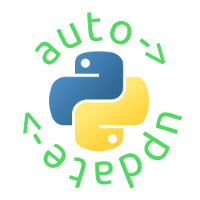Quickstart¶
Installing Dependencies¶
The core dependencies are
requestsfor retrieving updated versionssetuptoolsfor archive manipulation and version comparison
Distributing your Application¶
In the installer for your program, you need to include the following files:
- Code file that creates launcher
- Auxilliary code files passed into launcher
version.txtthat contains a PEP 440 compliant version numberfilelist.txtwith a list of paths to the code and resource files
See Project Structure for a directory tree.
Package these files into your application installer.
Pushing Updates to a Server¶
To create new versions, copy the code files into a directory
and compress the directory into a
.zip, .tar.gz, or a .tar.bz2 archive.
Upload the archive to the update server and place a file named version.txt
containing a PEP 440 version number in the same directory as the archive.
The server directory should now look like this:
server-directory-pointed-to-by-url
├── project.zip
└── version.txt
Pyautoupdate will then download the new version when performing updates
and replace the old code files with the new ones. It will modify the URL of the
update server to include the compressed archive name and the version.txt
version number, as shown below:
https://a_sample_website.com/ -> https://a_sample_website.com/project.zip
-> https://a_sample_website.com/version.txt
This is a sample application initialization file, including an update check before code execution.
import sys
from pyautoupdate.launcher import Launcher
# Run code and return with exit code of launched code
launch=Launcher("code_1.py","https://update-url")
# Check for update before running
need_update = launch.check_new()
if need_update:
# Prompt user for upgrade
response = ""
while response not in "yn":
response=input("An update is available."
"Would you like to update? (y/n)")
if response == "y":
# Update code
launch.update_code()
# Run developer code here
sys.exit(launch.run())
Replace https://update-url with the actual url of the folder on the server.
Note
You can create OS dependent URLs by calling OS detection routines in the initialization file and creating different update URLs for different operating systems. This is useful for packaging OS dependent files.

